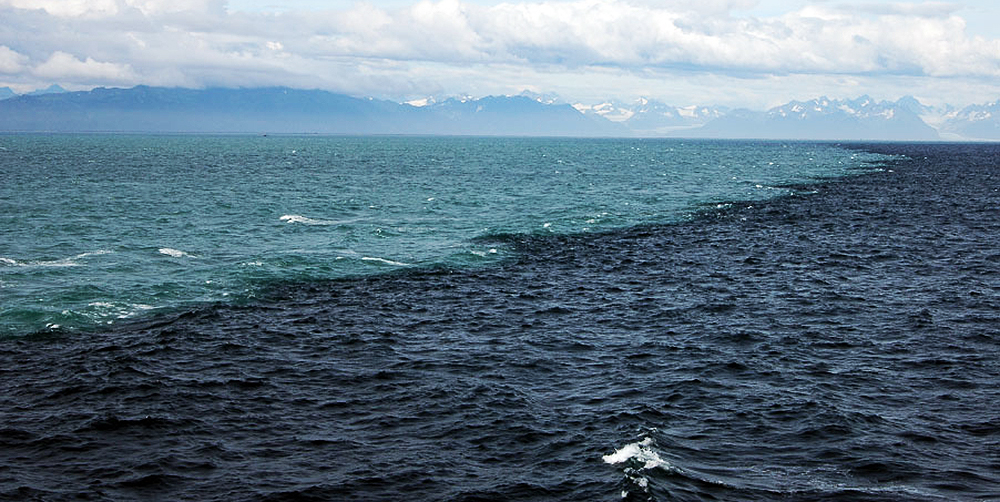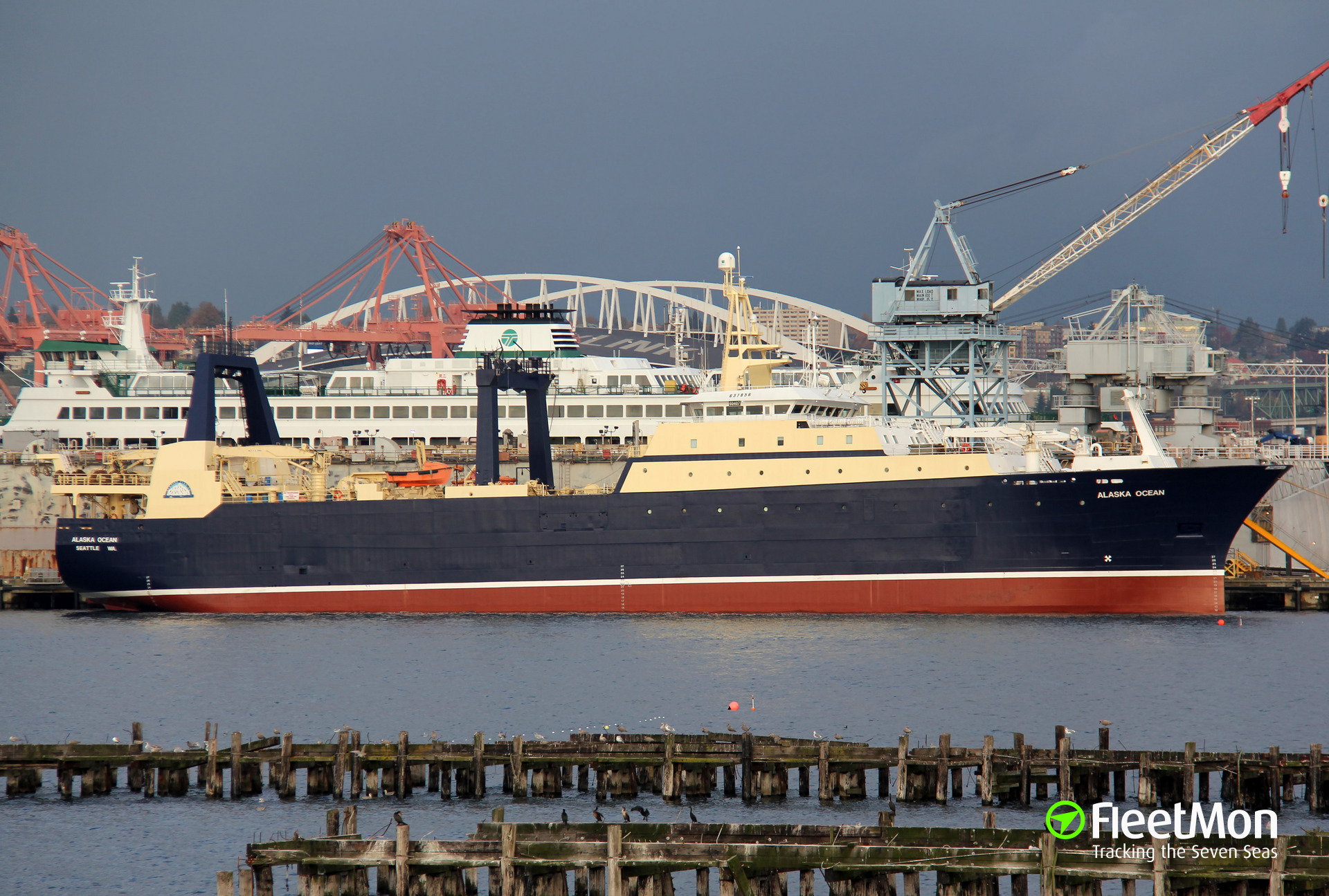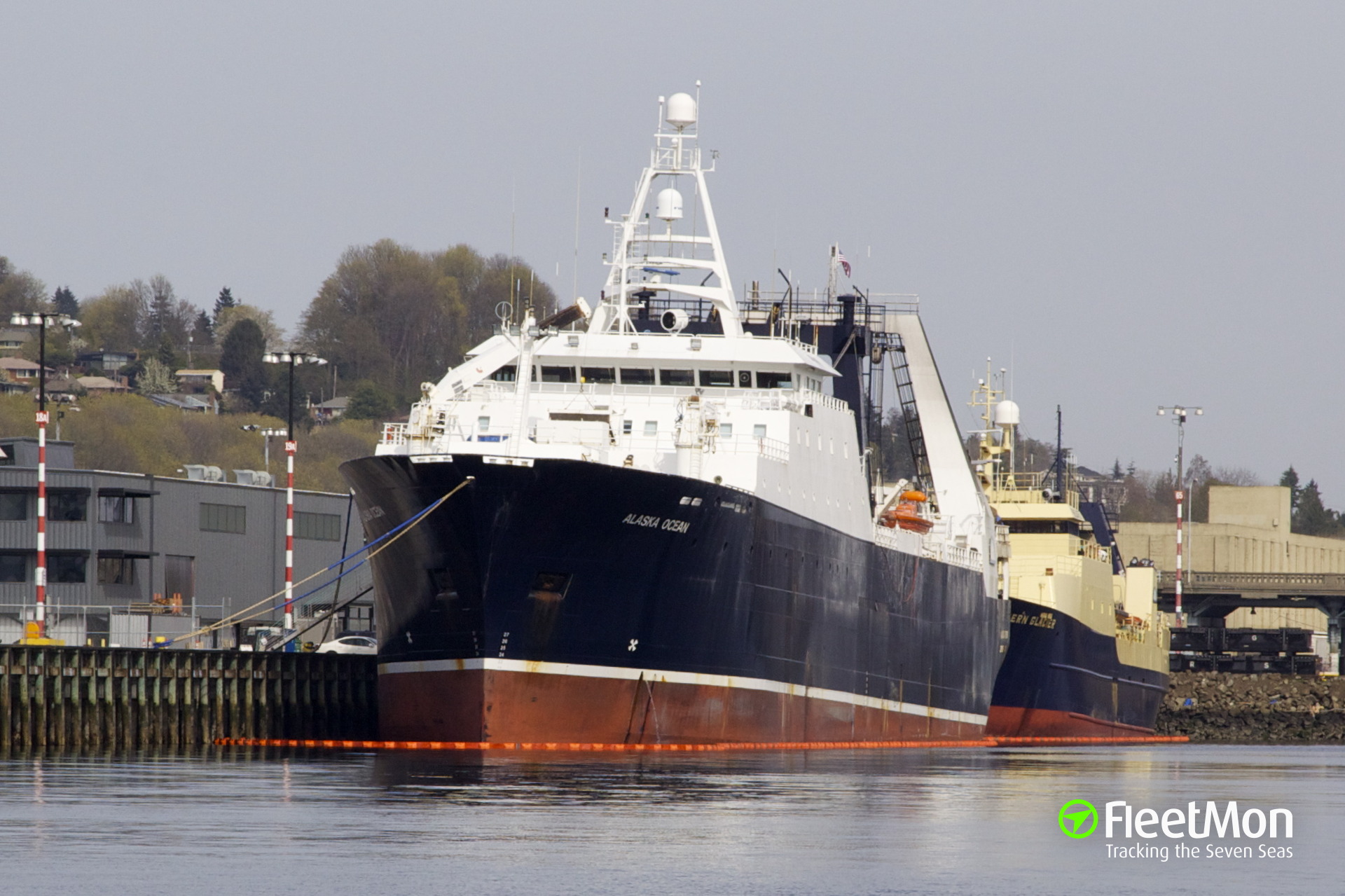Photo of ALASKA OCEAN (IMO 8030477, MMSI 368293000, Callsign KRCT) taken by Guido

This Strange Phenomenon Happening In The Gulf Of Alaska Needs To Be Seen To Be Believed
Ben Anderson is a former writer and editor for Alaska Dispatch News. He left the ADN in 2017. Photos dubbed "the place where two oceans meet" have been making the rounds on the Internet for years.

Dreaming of The Ocean (Alaska) YouTube
Recently, a beautiful photograph of the Gulf of Alaska- Merging Oceans by Kent Smith was making rounds on the Internet. Famed and claimed to depict the union of two oceans, the picture nevertheless evoke interest in minds of many. The sight of electric blue water meet but do not mix with dark blue water is pretty amazing.

MUSIC ALBUM DOWNLOAD OCEAN ATE ALASKA Lost Isles (2015). Rar
While we've given our planet's oceans separate names, in reality there's no border between them, and currents continually flow between them and mix their wat.

Gulf of Alaska where two oceans meet Two seas meet DidYouKnow YouTube
The Alaska Coastal Current is located in the inner third of the continental shelf and it is driven by along-shore winds. It has a typical width of about 30 km, the depth is 100-200 m, and the velocity is > 1 m/s. The mean transport is about 0.6 Sv and its seasonal variation is about 0.2 Sv. [4]

The Arctic Ocean is more like the Atlantic and Pacific, studies say Nunatsiaq News
To keep it simple, here's what happened: These are not two oceans, which only two different waters meet, namely the glacier melting water, which has a light blue color and the salty sea water.

to the Gulf of Alaska where two oceans meet, please choose the side you want to land in
In this photo provided by NOAA Ocean Exploration, a brisingid sea star taken from the Okeanos Explorer off the coast of Alaska on July 19, 2023, while exploring the mounds and craters of the sea.

Vessel ALASKA OCEAN (Factory ship) IMO 8030477, MMSI 368293000
Gulf of Alaska. / 57°N 144°W / 57; -144. The Gulf of Alaska ( Tlingit : Yéil T'ooch' [1]) is an arm of the Pacific Ocean defined by the curve of the southern coast of Alaska, stretching from the Alaska Peninsula and Kodiak Island in the west to the Alexander Archipelago in the east, where Glacier Bay and the Inside Passage are found.

Alaska in the Spotlight Supporting Communities Facing the Big Risks From Ocean Acidification
Maps exhibiting the world's oceanic waters. A continuous body of water encircling Earth, the World/Global Ocean is divided into a number of principal areas. Five oceanic divisions are usually recognized: Pacific, Atlantic, Indian, Arctic, and Southern/Antarctic; the last two listed are sometimes consolidated into the first three. The borders of the oceans are the limits of Earth's oceanic waters.

north atlantic tectonic plate pacific Google Search North american plate, Pacific ocean
The meeting point of these two oceans is called the "oceanic pole of inaccessibility," and it is located in the South Pacific Ocean. This point is considered to be the farthest place from any landmass on Earth, making it a remote and hard-to-reach location.. where the Gulf of Alaska meets the Bering Sea. Another example is the.

ALASKA OCEAN, Fish Factory Ship Details and current position IMO 8030477 VesselFinder
The photographs do not, however, depict a static location in the Gulf of Alaska where "two oceans meet." Sources Anderson, Ben "Mythbusting 'The Place Where Two Oceans Meet' in the Gulf of Alaska."

Where the Indian ocean and pacific ocean meet. Two oceans meet, Gulf of alaska, Places to see
A picture in the Gulf of Alaska that's been making the rounds online for the past couple of years -- although especially lately -- reveals a strange all-natu.

Alaska economist joins ocean cluster development group
A video circulating on social media shows what looks like a clear division between the Pacific Ocean and the Atlantic Ocean, with descriptions claiming that the two oceans meet but don't combine. This erroneous claim emerges quite regularly online but has a simple scientific explanation. "The waters meet without mixing," reads the caption.

Don't Be Fooled by this Photo of SoCalled 'NeverMixing' Waters Gulf of alaska, Two oceans
Having an uneven combination of mountain, forest and tidewater glaciers, Gulf of Alaska is the place where two oceans meet, but interestingly, they never mix with each other (as is believed). The color variations of dark blue and electric blue water in that merging point is clear and stunning. Even the growth of froth will show you the exact.

Photo by BE A GENIUS 💯💯💯 in Gulf Of Alaska. Image may contain ocean, water, nature and
Of that, more than half - 520,400 square kilometers - is in the Arctic Ocean beyond the 200-mile exclusive economic zone off Alaska's North Slope. Another 176,330 square kilometers is contained in a triangular section in the Bering Sea that abuts the U.S.-Russia maritime border.

Photo of ALASKA OCEAN (IMO 8030477, MMSI 368293000, Callsign KRCT) taken by Guido
Smith's photo was featured in an article by Alaska Dispatch News, "Mythbusting 'the place where two oceans meet' in the Gulf of Alaska" (archived here) Some of the posts purportedly showing 'two oceans not mixing' are simply photos of shorelines. The center photo is by Johann S. Karlsson, and shows a black sand beach in Iceland.

ALASKA OCEAN, Fishing Vessel Details and current position IMO 8030477 MMSI 368293000
The Alaska Ocean Observing System (AOOS) will be receiving funds from the NOAA Integrated Ocean Observing System (IOOS) under the Inflation Reduction Act (IRA) for the period of January 1, 2024-December 30, 2028. We are seeking proposals describing activities aimed at improving coastal resilience and advancing equitable service delivery at the.